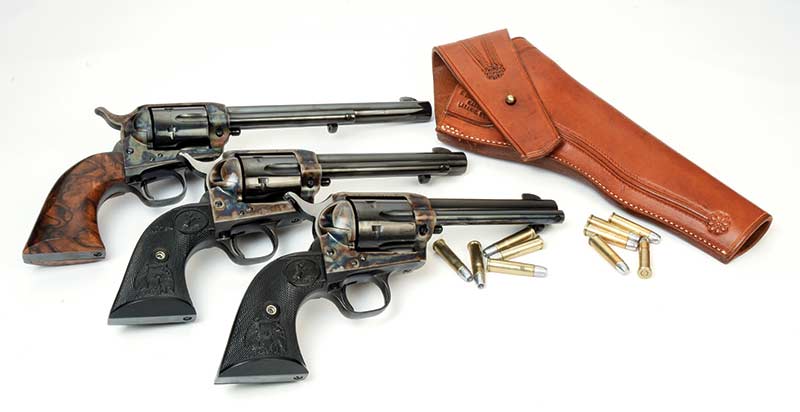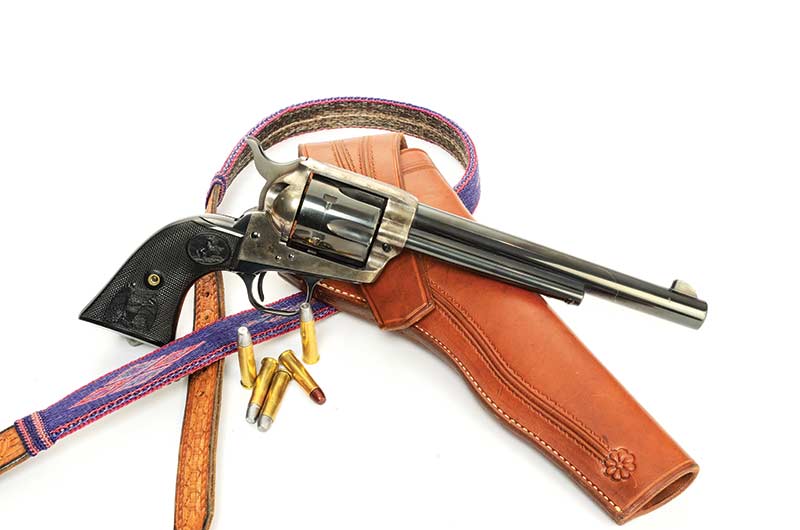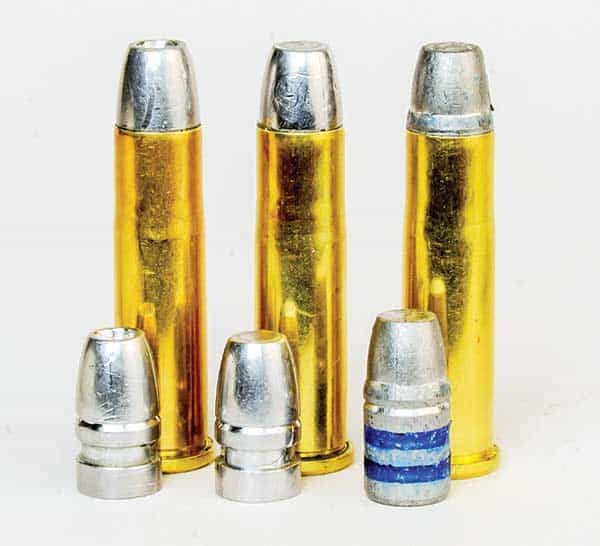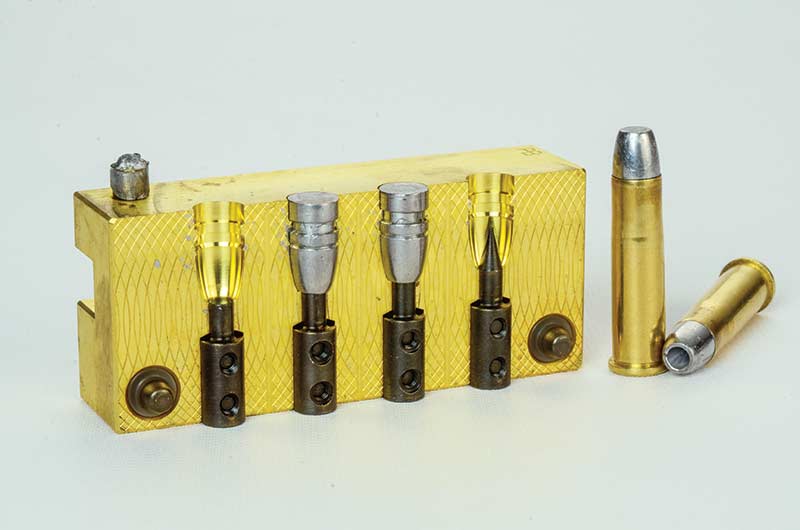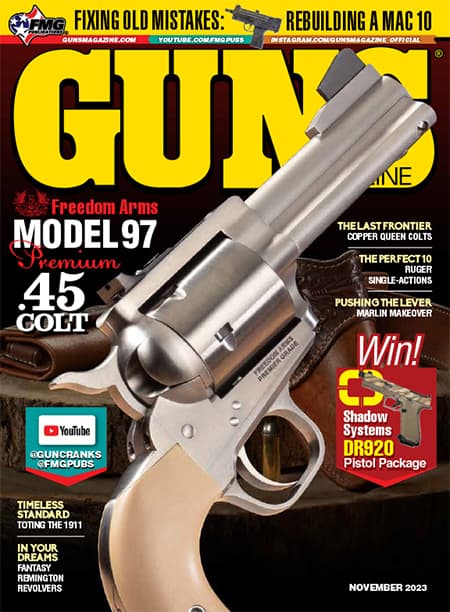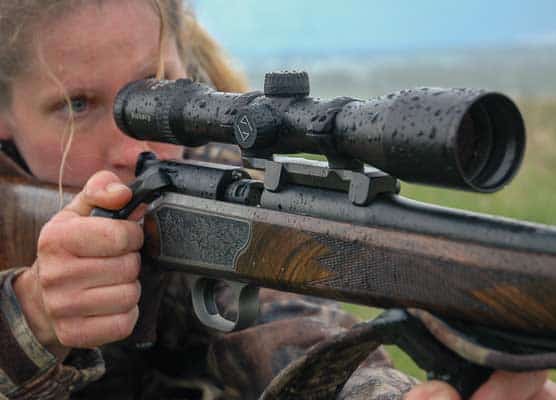Trifecta Of .32-20s
A fine and pleasant madness
Ever gotten off on the wrong foot with someone? This cliché can be attributed to me and the .32-20 cartridge. First it started in 1972 with a K-Frame S&W M&P. I bought it used for $75 — first shots revealed it only tumbled bullets because its barrel was ringed. Twenty-five bucks were lost on the deal. Now fast forward to 1979 when I bought a 1915 vintage Colt SAA with 4 ¾” barrel. It wouldn’t shoot worth a hoot. Best 25-yard machine-rest groups were 4″. After much fussing about, I learned its barrel groove dia-meter was 0.314″ but its chambers were only 0.310″ — a lousy combination for shooting precision. The Colt was disposed of quickly.
The Troubles
Now, let’s go to SHOT Show 2005. Colt had recently reintroduced .32-20 as a chambering option for 3rd Generation SAAs. My boss at the magazine to which I was contracted at the time asked me to talk to the Colt people for a consignment .32-20. We would feature it on the cover along with my article about shooting with it. I approached one of the “stuffed shirts” standing in the Colt booth and handed him my card with a request for a new .32-20. Now, keep in mind that by this time I’d been getting test guns from Colt for 25 years. The “stuffed shirt” handed me back my card and said, “I’ve never heard of you and we’re not sending you anything.” As we walked away Yvonne said, “Why aren’t you mad?” I responded, “That Yo-Yo is such an idiot it’s not worth the trouble.”
Until 2020 I had not seen one of the new Colt SAA .32-20s in person and only viewed precious few of them on Internet firearms sites. Then late one night when unable to sleep, I was browsing those websites again and spotted a used .32-20 with a 7 ½” barrel, my favorite length. It had been made in 2009. Its price was extremely reasonable but there was a reason why. Its owner said when he took it out of its factory box, the color case hardened frame had light surface rust all over. To keep it from getting worse, he used a chemical to remove the frame’s coloring, leaving it a mottled gray color. Conversely, its blued parts, i.e., barrel, ejector rod housing and grip frame were still perfect.
My feeling was I’d buy it, test fire it and if accurate, I’d do a .32-20 reloading piece and then decide perhaps to have its frame color case hardened — again — and keep it. Alternately if it shot like my first SAA .32-20, I’d pass it on to its next owner quickly. Well long story short; it’s still here, it’s beautifully color case hardened and it even wears fancy walnut one-piece stocks. The work was done by Bill Fuchs of Spring Creek Armory of Ten Sleep, Wyo.
Not only is it finely accurate with virtually every .32-20 handload combination tried, it placed bullets where its sights were pointed or very close thereto. With velocities in the 800/900 fps range, muzzle report was mild and recoil from the 3-lb. revolver is almost non-existent. My long-held .32-20 bias was gone in a single range session.
When you’re as old as I am and lived an active life, your hands, shoulders, elbows and knees begin to hurt. My thumbs especially do. Thus .32-20s have become some of my favorite plinking and steel plate popping handguns.
Dive In
Notice I said “.32-20s,” meaning plural. That’s because, in my usual fashion, I don’t just stick a toe in the water. I jump in. Early in 2022, I spotted a 3rd Generation SAA .32-20 for sale — you guessed it — on the Internet. This one was new-in-box with a 5 ½” barrel so I nabbed it at a much higher price than the 7 ½”. Its serial number rates also rates it as 2009 manufacture. Like the longer barreled one, this .32-20 also shoots tight groups but just a mite higher than I would like.
By the way, after satisfying myself both of these 3rd Generation .32-20s were great-shooting revolvers, I satisfied my curiosity about their barrel/cylinder specs. Sure enough their barrels slugged at 0.310″ as did their cylinder chamber mouths except one chamber mouth on the 5 ½” went to 0.311″. No big deal there.
Let’s take a brief break from my Internet adventures. Although I don’t recall doing so, I must have sold or traded all my .32-size bullet molds during my long hiatus from .32-20 handloading. Since this was all happening during Covid-19 times, finding molds made by the usual reloading tool companies proved impossible. Therefore I turned to a couple of smaller custom mold makers.
In Utah there is Arsenal Molds whose website showed a copy of RCBS’s #32-98SWC mold for a 0.314″ SWC. I ordered one in brass with four cavities. Also I turned to a European source — MP Molds of Slovenia. Their website showed their #640-115HP mold in stock, again brass with four cavities. It was in my hands in seven days.
MP Molds offers a unique option for hollowpoint molds. It’s a nifty pin arrangement allowing the user to cast all HPs or all solids or combinations of the two styles. The basic bullet is a 0.314″ RN/FP style weighing 120 grains of my 1:20 tin/lead alloy or 115 grains as HPs. The above-mentioned Arsenal SWCs dropped out as 100 grains. All three of these bullets were sized 0.313″ and lubed with DGL.
It’s A Gas
Also due to Covid-19, smokeless powders have had reduced availability. However, I do have stocks of four pistol powders on hand. They are Bullseye, Titegroup, W231 and Unique. With the above three cast bullets, my favorite charges turned out to be 3.0 grains of Bullseye and 3.5 grains of Titegroup. Think about this for a moment. This charge of Bullseye nets 2,333 loads per pound of powder. The 3.5 grain charge of Titegroup gives 2,000 loads.
All my .32-20 handloads have been assembled with an RCBS “Cowboy” die set intended specifically for lead-alloy bullets. They worked to perfection. My only handloading blip came when the hammers of both Colts tended to puncture primers. It’s not unsafe but the escaping high-pressure gas will erode the firing pin. The problem was easily solved by using small rifle primers. Does it increase pressures? No or not enough to matter. For instance, with 3.0 grains of Bullseye under the 100-grain SWC Winchester, small pistol primers gave 840 fps from the 7 ½” barrel. The same load with Federal #200 small rifle primers gave 845 fps and with no gas leaking.
Leverage
Still my .32-20 adventures have not ceased. Anyone with a single action .32-20 always wants a companion lever gun. I bought a Cimarron/Uberti Model 1873 saddle ring carbine. Upon arrival, I quickly loaded the magazine with some of my handloads only to sit for a bit while every single one was laboriously fished back out the loading gate. They were too long to feed from the tubular magazine. Winchester lever guns, Models 1873, Models 1892 or replicas thereof, require an overall loaded cartridge limit of 1.592″. My handloads measured over 1.60″. The bullets I had cast couldn’t just be seated deeper, for without a good crimp, magazine spring pressure forces bullets back into cases — not a good thing in any manner.
So back to MP Molds I went for their #640-100HP set of four cavity brass blocks with the HP pin arrangement. It was quickly in my hands with cast bullets falling at 0.314″ weighing 100 grains as HPs and 105 grains as solids. So far I’ve just loaded them over the above charges of Bullseye and Titegroup. Both bullets are accurate from the lever gun and perhaps even more accurate than the heavier bullets from the revolvers. In fact, the lighter bullets brings the 5 ½” barrel’s point of impact almost perfect to point of aim.
And I’m still not through. Remember, I said this article is about a .32-20 trifecta. Another 3rd Generation .32-20 popped up on the Internet. I instantly knew it had to be mine as it wore the 4 ¾” barrel to complete my trifecta of 3rd Generation .32-20s. I only had it for a few days before the Montana winter set in but 100 rounds through it indicated it might possibly be the most accurate of the three, and it darn sure shoots to its sights.
I slugged its bore and measured chamber mouths and they are right on at 0.310″ for barrel grooves and chamber mouths. Interestingly, a note came with the Colt signed by Ken Hackathorn, a respected writer, saying this .32-20 was from his collection. I’ve never met Mr. Hackathorn but can attest he takes good care of his firearms. This one was in 99%-plus condition and was made in 2005.
As said, I tend to jump into things with both feet, so be aware I also landed a very fine condition Winchester Model 92 saddle ring carbine in .32-20. So far, only a measly six rounds were fired from it out the back door during a lull in a snow storm. I think it’s going to be a keeper to go with my trifecta of Colt SAAs.
